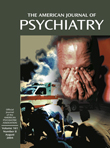This book gives a detailed explanation of the findings of Project MATCH. This undertaking was a large study that evaluated whether the treatment of alcoholism could be improved by pairing different kinds of treatment with different types of alcoholics. This appears to be the largest study of this kind yet conducted, involving 1,726 subjects from numerous locations. The rationale, methodology, and results are well presented. This small volume is very concise and maintains the standards expected in a research-based text. The project was primarily derived from research funded by the National Institute of Alcohol and Alcohol Abuse. It is good to know what happens to tax dollars, and in this case they appear to have been well spent.
Alcoholism is an extremely serious public health problem. The morbidity and mortality attributed to this illness involve millions of lives and billions of dollars each year. The comorbidity associated with this disease is pervasive and long lasting. The history of research on this topic is commendable but spotted by poor controls and a lack of objective measures. The MATCH research makes an important contribution to our understanding of treatment outcomes. It takes a major step toward accountable operational methods for examining our treatments.
This book gives detailed information about areas of success and the matching of therapeutic modalities. The degree of detail cannot be understated. The chapters on sampling, methodology, and analysis are well described. Issues regarding matching and measurement are clearly stated and avoid unnecessary technical jargon. Improvement of alcoholism was related to lower rates of depression and improved general health. This has been demonstrated before but is worth mentioning because of the magnitude of the burden that alcohol places on society.
Although individual results may vary from treatment to treatment, this variation is reduced to an almost anecdotal level when multisite examination of variables is conducted. Perhaps a major value of this publication is in the demonstration of the broad effect when many subjects and variables are examined. Indeed, great care has obviously been taken to preserve the integrity of data collection and analysis in this study. By doing so, the researchers have eliminated many design problems and peculiar results seen in smaller or less rigorous studies.
The volume continues with a fine summary section. The results provide interesting insights. The editors indicate that perhaps personal motivation is very powerful in predicting treatment. The degree of participation in Alcoholics Anonymous is demonstrated to have a strong positive effect on outcome. Things like social support and personal effort seem to be vital to successful abstinence. It is good to see a well-developed scientific approach to alcoholism treatment. Although many books have been written on this topic, few have the scientific rigor to satisfy practitioners and researchers alike. The research presented in this book represents first-class evidence-based methodology and analysis. I highly recommend it.

